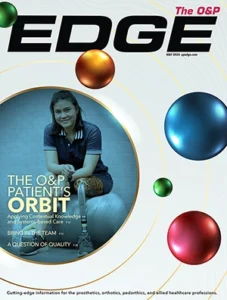Chris Johnson asked me to post his response to my question in regards to accommodations to ride a
motorcycle. See below.
Subject:
Motorcycle Accommodations
Date:
Mon, 1 Nov 1999 09:57:39 -0500
From:
Chris L Johnson To: CC: [email protected], [email protected], [email protected] On Sun, 31 Oct 1999 22:21:47 +0000 [email protected] writes: > Chris, if I remember you ride a motorcycle. I had an inquiry about > this from a local hospital rehab. group. Can you give me any details on > modification to the bike or issues you may have encounted? Dear [email protected]: Please re-post this to oandp-l as a response, if you find it helpful. I cannot legitimately do so under the “rulz”. -CJ I am a right BK and left partial hand (2-2/3 fingers). I ride two forms of motorcycles, road touring and competitive Observed Trials. I have 6 motorcycles! Yes, I am an addict. Once you are bit, that’s it! My wife and I road ride, or more specifically, do local country touring. Her bike is a Yamaha Virago 1,100 and mine is a rare Yamaha XV920RH “Euro”. Both are air cooled V-twins. I have no special accommodations for road riding. When I want to use the rear brake, I simply lift my right leg off the peg and actuate it with the heel of my shoe. My current prosthesis does, however, have a posterior trim line that has been trimmed to match the anatomy in the popliteal region through extreme flexion angles. The hamstring tendons were tracked during flexion, and the socket relieved for each while keeping the area between high. My medial hamstring is really low and the cutout for it goes really low. Thus I can sit practically over my feet with my knee in 110 degrees of flexion and not have the prosthesis kill me or the leg want to lift out. My current set-up is a 9mm Alpha with suction fit only and no sleeve. Yes, the leg can fall of and it has, but it is rare. This leg I also use for the next, and more major motorcycling adventure, Observed Trials. I have been an Observed Trials rider since `88. I have done off road since `70, and I will share later some of my former accommodations. To see Trials, go to www.trials.co.uk and search around for photos. You will be stunned. I will share a bit about it since I know most of you don’t have an inkling. Observed Trials is a very old form of motorcycling that started in UK some 80 years ago as riders would “try” to make it up hills and over obstacles. “Tryals”, now spelled Trials. Bikes used to be modified street versions years ago. Today, they are highly specialized, slim, low, agile bikes. There is no seat as we always stand on the bike. They weigh only 170 pounds (80 kg), are generally 2-stroke 250s, and are very smooth, the controls easy. The motor has lots of low end, but they are quick revving. Very quiet too. The tires are tubeless radials run at very low pressures. The back tire looks almost flat, and the rear near so. The purpose is to stick and not slip. Speed is wholly irrelevant. In fact, the better you are, the slower you can ride and maintain control, even tot he point of balancing in place as long as you want, and hopping the bike around. The rules of the sport are somewhat complex, but suffice to say the purpose is to not put your feet down or crash when negotiating a series of short courses appropriate for your skill level. Putting feet down to regain control results in points. Crashing of failing the short course results in the most points. Those with fewer points win. These short courses are called sections. In each section there is provision for classes, ranging from the bottom or easiest up many levels to the top or hardest. The top classes see large obstacles, like car-sized rocks, big logs and very steep hills. I ride the top class in Michigan. This year I finished 3rd on my trusty French Scorpa, a very slim, water-cooled, Rotax-powered machine. What are my accommodations? The only accommodation I have is I put my rear brake, which is normally on the right, on the left. Both brakes are hydraulic units. Strong brakes are very important in Trials. We will sometimes need to flip the bike around, pivoting on one wheel or the other. One finger pull is enough to promote a nose wheelie, and mild foot pressure will lock the rear end up solid. I re-mount the hydraulic cylinder on the left by welding on tabs for the master cylinder. I make a new brake lever, and run the reservior hose and brake line over to that side. Now you may be thinking about shifting, as that is also on the left. Unlike “fast bikes”, we don’t shift a bunch while competing, and the lever is up and forward so you don’t knock your bike out of gear when you sometimes flail around. Thus while the rear brake pedal is just under my left big toe, the shift lever is up and forward. The two do not interfere with one another. As for my left hand, I grip with the ring and little fingers. The index finger, which has been transposed to my middle finger metacarpal base, and which is short one joint, serves to operate the clutch lever. My accommodation here was to use the “shorty” levers supplied by the brake manufacturer, AJP of Spain. The shorty levers are ergonomically more correct than the standard levers. I can just get my finger tip onto the lever. We use the clutch so much in trials for balance, tricks, and launching over obstacles. It is constantly in and out, and being modulated to emulate an automatic transmission. I have to have excellent clutch control, and be able hang on too! Somehow, I have just enough of both to do well. Fortunately the clutch is also hydraulic and very easy to pull in with one finger. In the past, as a “fast bike rider”, I competed in Cross Country, a motocross-like distance race (50 miles) on motocross bikes. On my last “fast bike” (KDX 200 with KX suspension) I had no accommodations . I used the rear brake, again, with my heel. It could get scary at times, flying into a corner to slam on the rear brake, slide around and clutch out of the corner. Missing the brake meant a very scary ride over the corner berm and into the trees. Ouch! The bike previous (`85 KTM 350), also for Cross Country, had a hand operated rear brake just under the clutch lever. Problem with that was lack of coordination with the clutch, and arm pump up and fatigue. It takes a lot of force to operate a rear brake by hand. Yet another (`85 YZ 250) had the rear brake linked with the right hand front brake lever. The front brake was hydraulic, and the rear a cable-operated drum. That worked OK when adjusted properly. But drums will wear, and once I did a 30 mph face plant in a competition in Oklahoma City on hard pack when I pulled in the front brake and the rear had worn and got hot and was no longer engaging. Ouch! I got a concussion from that one. I lost my foot in `82 and started riding again in `84, which was a life saver in terms of my own rehab. It was good to discover I could compete against, and win against, “normies”. Overall, I have found that simple accommodations work best. Assumed need for complexity will often result in over-complex accommodations. The natural assumption is to assume you will need more accommodations than you actually do. Example: non amputees will assume the one-armed person cannot do much and they do everything anyway. New amputees often do not realize how adaptable we really are. I often joke, “what do you think God gave us all those spare parts for anyway…” It really is a mental game of cognitive adaptations. Mental prisons await those who assume they are or will be automatically limited and don’t bother to seek solutions. The ones who lose limbs and do best are those for whom their limitations are first mental, then physical, challenges to overcome. For driving a car, I have no accommodations. I simply operate the accelerator from the knee joint instead of the ankle joint. It is completely automatic. I don’t have to think about it. Actually, I am a smoother driver than most! In a pinch, I can even drive a stick with prosthesis off, with all foot controls being operated via the left foot. I don’t use handicap privileges. I did years ago in college, getting a sticker to allow me to park anywhere. At that time, I had a rather poor prosthesis and bone spurs. Ouch! Say you are an AK and want to ride a motorcycle. There are numerous solutions available. Worrying about falling over if you plant your leg and the knee buckles? Well, that may and probably will happen. Without any special accomodations, you can lear new skills instead, like just before you stop, a quick turn toward the prostheitc side will cant the bike toward the sound side to lean on the sound side leg. Some practice and you’ll have it. Will you fall? Probably. But look at bilat AKs who walk without assistance. They made it there by falling, falling, and falling again. Say you are an arm amputee. I know of a BE in New Mexico who actually rides Trials with no prosthesis. When called for, he pushes and pulls on the handlebar with his residuum! I know of arm amputees who have mechanisms to emulate a clutch, or leg amputees with electric shift. There is a way. There is always a way. I think too there is an organization of amputee motorcyclists. Haven’t found them or their web page yet. Suppose I should. Anybody know how to get to them? I suppose I should join and be counted. Hope you or someone else find this helpful. Chris Johnson Scorpa 250 EZ Fun/Gas-Gas 160/Fantic 305/Yamaha Virago 1,100/XV920RH Euro and now vintage `74 TY 250 [email protected] as Director of Engineering at College Park see www.college-park.com and [email protected] (personal address)




